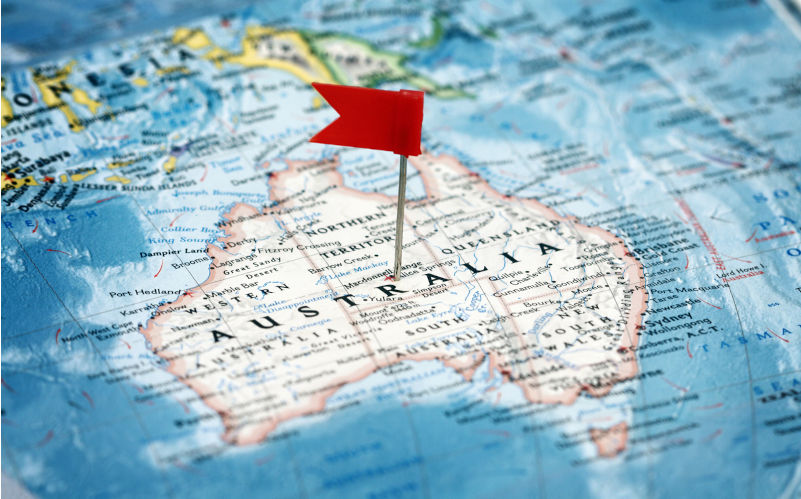Exactly 45 years ago, Dr Desmond Ball, a genuine academic researcher at the Australian National University in Canberra, wrote his seminal study of the American military and intelligence gathering “facilities” located in Australia.
He called his book A suitable piece of real estate. In the preface, Dr Ball explains two reasons for the choice of title.
Firstly, Australia, and especially Pine Gap on the outskirts of Alice Springs, is “suitable” – almost the perfect locus for a base from which to spy on China and Russia as it’s almost exactly opposite mainland United States on the other side of the globe and thus critical for real-time communication with low orbit spy satellites and geo-stationary military satellites 38,000 km in orbit.
But Ball explains his second reason for his choice of title.
“It conveys,” he writes, “the disdain with which the Australian people and Australia’s basic interests have been treated in the establishment, maintenance and operation of the American facilities in Australia. The prevailing American attitude has been one of presumption – Australia has generally simply been taken for granted by the US.”
So why has it taken an erratic Australian Senator — Tasmanian Jacqui Lambie, with nothing much to lose — to call out the idiocy of pretending that the new Trump administration’s tariff stunt should come at no cost to the belligerent Americans?
Silence from both sides of the Parliament.
Silence from the “think-tanks’ like the Canberra-based Australian Strategic Policy Institute, the Lowy Institute and the US Studies Centre at the University of Sydney. The first of these, a thinly-disguised venal promoter of United States military-industrial interests, would have made the affable, technically brilliant Des Ball’s blood boil.
Ball was a senior research fellow at the Strategic and Defence Studies Centre at the Australian National University – a genuinely independent research outfit.
The others mentioned above are all reliant on Australian or US Government funding and large corporate donations.
That was the thing about Ball: his research skills and dedication to rooting out facts in the deliberately clandestine and hopelessly unbalanced world of US-Australian military and intelligence “sharing” were legendary.
In his book, Ball identified 14 separate US installations on the Australian mainland, almost all of them controlled by officers of the US Central Intelligence Agency or the Pentagon with minimal or no oversight by any Australian political or defence person. This was, remember, in 1980. The situation has only expanded since then.
And for those who take some comfort in the notion that the notionally progressive or left side of politics in Australia has shown any scepticism towards the “joint” arrangements, Ball cites only a very modestly-raised eyebrow from former Labor prime minister Gough Whitlam after the 1972 election, but notes Whitlam justifying his government’s policy of continued secrecy in March 1973 with the rather astonishing claim that he could not disclose any information about Pine Gap and Nurrungar (another US base near Woomera) “because they are not our secrets. We never told the people at the [1972] election that we would disclose other people’s secrets”.
Since then Australian Governments of both stripes have gone all the way with the US. It was, after all, the Labor Gillard government which a little over a decade ago joyously announced the siting of 30,000 (yes 30,000) US Marines on rotation at a US base in Darwin, with the Rudd, Abbott, Morrison and now Albanese governments overseeing the massive expansion of the Tyndall air base outside Darwin, with deep bunkers and extended airstrips to carry B-52 bombers.
Not to mention the supposedly “bipartisan” AUKUS nuclear submarine agreement which is surely something out of a comedy sketch penned by Rob Sitch. This latest folly is likely to cost half a trillion dollars, with at least $5 billion already sent to US and UK weapons manufacturers, including the down-at-heel Rolls Royce company in Britain. Current Defence Minister Richard Marles, seemingly impervious to the latest show of disdain towards Australia by a spiteful Trump administration, keeps trying to promote AUKUS against a very welcome pushback from senior Labor figures like former PM Paul Keating and former Labor Foreign Ministers Gareth Evans and Bob Carr.
Re-reading Ball’s book triggered a memory of my own. A decade after its publication, as the then editor of The Australian Financial Review, I travelled on a US State Department-sponsored, month-long visit to the US (the journalists used to dub them “CIA tours”). In the final week of the gig, I was at a place called CincPac in Hawaii (it stood for Commander in Chief, I recall) where a cluster of vice-admirals, all clean shaven and bejewelled with military badges and colourful epaulettes, had gathered to give the editor of an influential Australian newspaper the good oil.
Overwhelmingly, the US military bigwigs were obsessed with, of all places, New Zealand. Bob Hawke was Australian PM at the time but didn’t even get a mention.
“Goddamit, don’t let your guys get that damn Kiwi disease!” one gum-chewing vice-admiral thundered, staring out over the glittering blue waters of Pearl Harbour.
They were of course referring to the decision in 1984 by the NZ Government of Labour’s David Lange to refuse entry to any NZ port of a ship unless it declared it was not carrying a nuclear weapon. Don’t worry about the NZ in the laughably loose ANZUS treaty, the US navy fulminated and sulked. But Lange didn’t budge. For 30 years, until 2014, New Zealand navy vessels were unable even to dock at naval facilities in Hawaii’s Pearl Harbour during joint Pacific Rim exercises.
Ah, they were the days.

Gerard Noonan
Gerard Noonan is a former editor of The Australian Financial Review. He is a Walkley award winning journalist, former Chair of Media Super and previously a board member of the Federal Government’s Innovation Australia,
